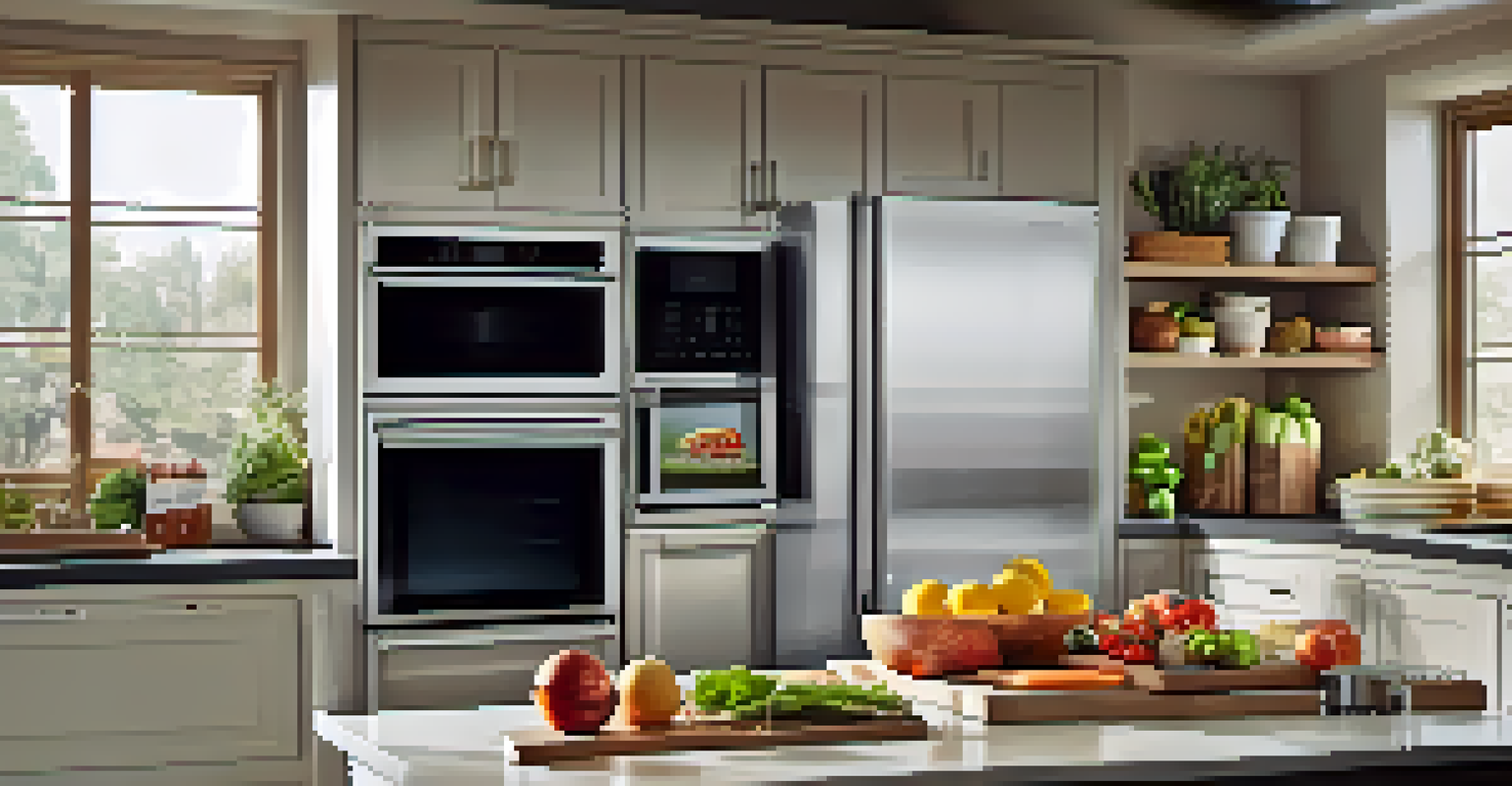Creating a Smart Home: Essential Devices to Consider

Understanding the Basics of Smart Home Technology
Smart home technology refers to devices that connect to the internet, allowing you to control them remotely. These devices can enhance convenience, improve energy efficiency, and even boost security. Imagine having your lights adjust automatically based on your schedule or your thermostat learning your preferences over time.
The future is here; it's just not evenly distributed yet.
Essentially, smart home devices communicate with each other and can often be managed through a central hub or an app on your smartphone. This interconnectedness enables automation, meaning you can set routines, like turning off all the lights at bedtime with just a tap. As the technology evolves, the possibilities for creating a seamless and efficient home grow exponentially.
Before diving into specific devices, it's important to assess your needs and how much you want to automate. Consider what aspects of your daily life could benefit from smart technology, whether it’s security, convenience, or energy management. A thoughtful approach will help you build a smart home that truly enhances your lifestyle.
Smart Lighting: Illuminate Your Space Intelligently
Smart lighting is one of the easiest ways to dip your toes into the world of home automation. With smart bulbs, you can control brightness, color, and even set schedules from your smartphone or voice assistant. Imagine coming home from a long day and having the lights turn on automatically as you walk through the door.

Not only do smart lights provide convenience, but they also offer energy savings. For example, you can set them to turn off when you leave a room, reducing energy waste. Additionally, features like dimming can help you create the perfect ambiance for any occasion, whether it’s a cozy movie night or a vibrant gathering with friends.
Smart Home Tech Enhances Life
Smart home technology provides convenience, energy efficiency, and security by allowing remote control and automation of various devices.
Many smart lighting systems also integrate with other smart devices, allowing for advanced routines. For instance, you can set your lights to gradually brighten in the morning, simulating a natural sunrise to help you wake up more gently. This seamless integration transforms your space into a responsive environment that adapts to your lifestyle.
Smart Thermostats: Control Your Home's Climate Efficiently
A smart thermostat is a game changer for managing your home's heating and cooling systems. These devices learn your habits over time, adjusting temperatures automatically to suit your preferences. Imagine never having to come home to a sweltering house again because your thermostat knows to cool things down before you arrive.
Technology is best when it brings people together.
Moreover, smart thermostats can significantly reduce your energy bills. By optimizing heating and cooling based on when you’re home or away, they help prevent energy waste. Some models even provide energy reports, so you can track your usage and find ways to save even more.
Integration with other smart home devices is another appealing feature. For instance, if your smart smoke detector goes off, your thermostat can automatically turn off the HVAC system to prevent smoke from spreading. This added layer of safety is just one example of how smart devices can work together to enhance your home.
Smart Security Cameras: Safeguard Your Home with Ease
Smart security cameras offer peace of mind by allowing you to monitor your home in real-time. With features like motion detection, night vision, and two-way audio, these devices keep you connected to your property, no matter where you are. Picture being able to check in on your pets or receive alerts when someone approaches your front door.
Many smart cameras also allow for cloud storage, so you can review footage from specific time frames if needed. This can be invaluable for insurance claims or simply keeping a record of events around your home. Plus, most systems enable you to share access with family members or trusted neighbors, enhancing community safety.
Integration Boosts Home Functionality
Smart devices work together seamlessly, enabling advanced routines and improving safety, such as linking security cameras with smart lights.
Integration with other smart devices further elevates their functionality. For example, your security camera can trigger your smart lights to turn on when it detects motion, deterring potential intruders. This level of automation makes your home not only smarter but also safer.
Smart Speakers: Your Voice-Activated Home Assistant
Smart speakers are more than just music players; they serve as the central hub for your smart home. With voice activation, you can control various devices, set reminders, or even ask questions without lifting a finger. Imagine saying, 'Good morning!' and having your lights brighten, your coffee maker start brewing, and your favorite news station begin playing.
These devices often integrate with a wide range of smart home products, allowing for easy management of your home environment. For instance, you can use voice commands to adjust the thermostat or lock the doors, adding convenience to your daily routine. It’s like having a personal assistant that’s always ready to help.
Additionally, smart speakers can be a fun way to enhance family interaction. You can play trivia games, listen to audiobooks, or even set up routines for family activities. This blend of entertainment and practicality makes them a must-have in a smart home.
Smart Plugs: Transforming Ordinary Devices into Smart Ones
Smart plugs are an affordable and versatile option for those looking to dip their toes into home automation. By plugging any ordinary device into a smart plug, you can control it via your smartphone or voice assistant. For example, you could set your slow cooker to start cooking while you’re at work, ensuring dinner is ready when you get home.
These devices often come with scheduling features, allowing you to set timers for when certain devices should turn on or off. This is perfect for things like lamps or fans, helping you save energy and create a more efficient home. You could even simulate your presence at home by scheduling lights to turn on and off while you’re away.
Smart Appliances Save Time & Energy
Smart appliances streamline daily chores and enhance efficiency with remote controls and energy-saving features, making home management easier.
Furthermore, many smart plugs have energy monitoring capabilities, giving you insights into how much energy specific devices are using. This information can help you make informed decisions about your energy consumption. With a simple plug-in, you can enhance your home’s intelligence and sustainability.
Smart Appliances: The Future of Everyday Tasks
Smart appliances, from refrigerators to washing machines, are revolutionizing the way we handle daily chores. With features like remote control and monitoring, these devices can streamline your routines. For instance, imagine being able to check the contents of your fridge from the grocery store or receiving alerts when your laundry is done.
These appliances often come with advanced features that can save time and energy. For example, smart ovens can preheat remotely, ensuring they’re ready when you arrive home. Some even have built-in recipe suggestions based on what you have available, making meal prep easier than ever.

Moreover, the integration of smart appliances with other devices can enhance convenience further. For instance, your smart dishwasher can sync with your smart home hub to run during off-peak energy hours, reducing your utility bills. As technology continues to evolve, the potential for smart appliances to improve our lives is only going to expand.